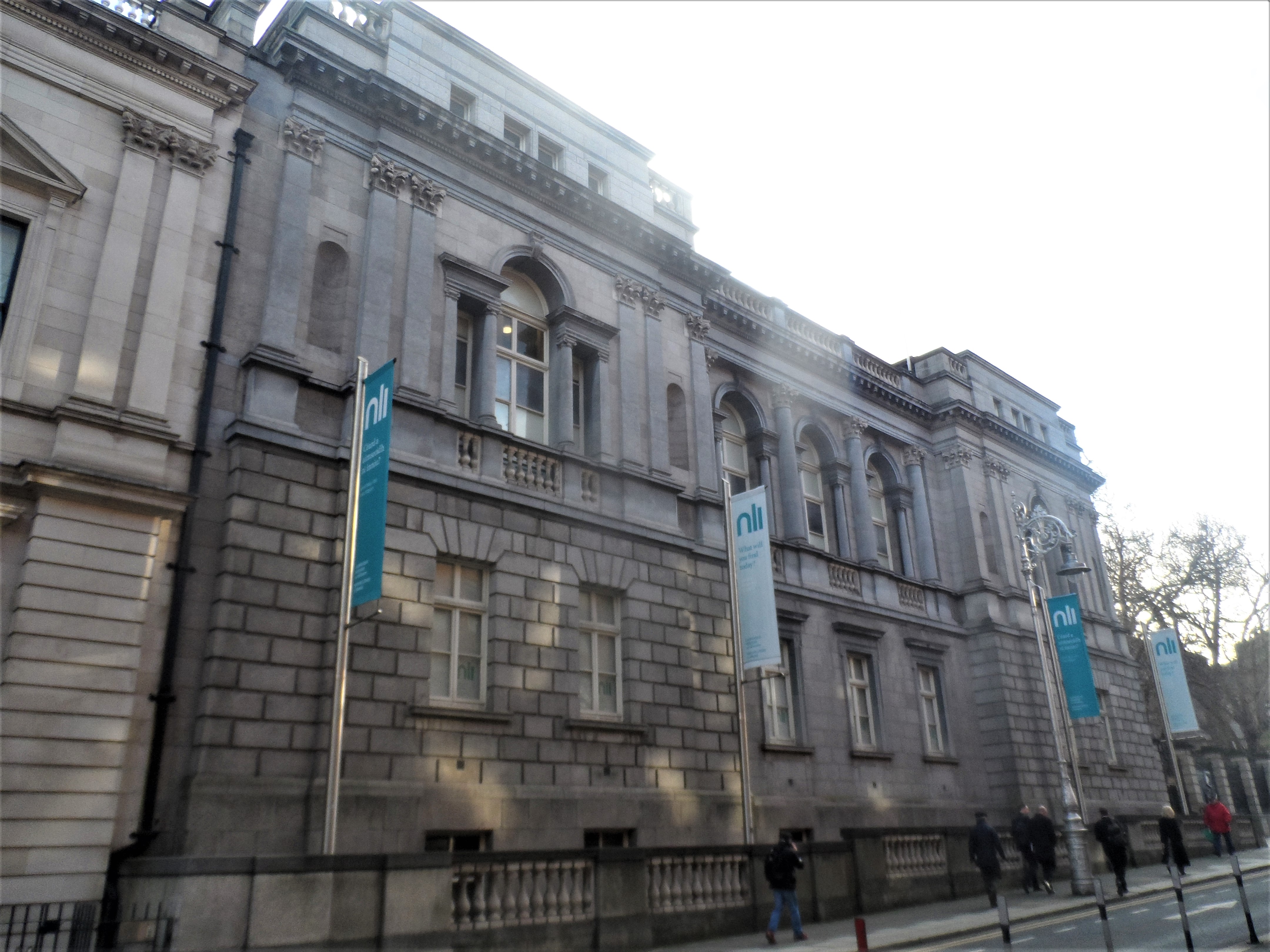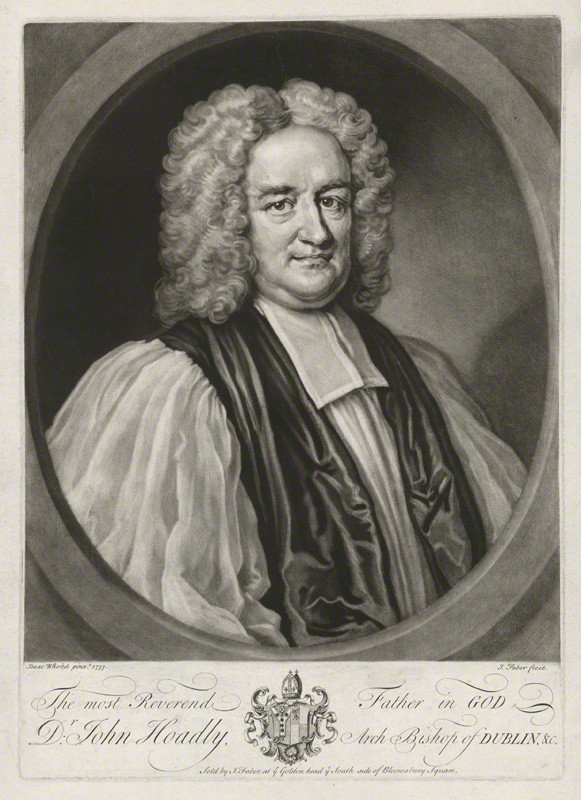|
Tallaght Castle
Tallaght Castle (also known as Tallaght House and formerly known as the Archiepiscopal Palace) was a castle in Kilnamanagh, Tallaght, County Dublin, Ireland. It dates from the 14th century. It became an official residence of the Church of Ireland Archbishop of Dublin until 1822. It was taken over by the Dominican Order in 1856. The castle is now in ruins with only a small proportion of it incorporated into the St. Mary's Priory building, in the grounds of St. Mary's Dominican Priory and the Priory Institute The old palace gardens, Archbishop’s bathhouse, the Friar's Walk and St. Maelruain's Tree still remain in the current grounds. Development Tallaght village was first walled in about 1310. As ordered by Archbishop Alexander de Bicknor, the initial castle was built between 1324 and the 1340s, to defend the settlement. The original castle is thought to have comprised high walls with a courtyard in the centre. It was in bad condition a century later. In the mid-1400s, imp ... [...More Info...] [...Related Items...] OR: [Wikipedia] [Google] [Baidu] |
The Priory Institute
The Priory Institute, is part of the St. Mary's Dominican Priory on the grounds of the old Tallaght Castle, Dublin 24, Ireland and provides, certificate, diploma, and degree programmes in theology and philosophy. Course accreditation In 2011, the Institute entered into partnership with The Institute of Technology, Tallaght (ITT). As a delegated authority of Quality and Qualifications Ireland (QQI), The Institute of Technology, Tallaght validate all the academic programmes at The Priory institute. QQI is a public body, which is accountable to the Irish government and the Oireachtas and is the national accreditation board for higher education qualifications in Ireland. The institute's certificates, diplomas and degrees are aligned with the National Framework of Qualifications NFQ structure. From 2019 the Technological University Dublin accredits progammes at the Priory Institute, following the merger of the Institute of Technology into the new university. In addition the Accred ... [...More Info...] [...Related Items...] OR: [Wikipedia] [Google] [Baidu] |
National Library Of Ireland
The National Library of Ireland (NLI; ) is Ireland's national library located in Dublin, in a building designed by Thomas Newenham Deane. The mission of the National Library of Ireland is "To collect, preserve, promote and make accessible the documentary and intellectual record of the life of Ireland and to contribute to the provision of access to the larger universe of recorded knowledge." The library is a reference library and, as such, does not lend. It has a large quantity of Irish and Irish-related material which can be consulted without charge; this includes books, maps, manuscripts, music, newspapers, periodicals and photographs. Included in its collections are materials issued by private as well as government publishers. Among the library's major holdings are an archive of Irish newspapers and collections donated by individual authors or their estates. The library is also the ISSN National Centre for Ireland. The office of the Chief Herald of Ireland, the National ... [...More Info...] [...Related Items...] OR: [Wikipedia] [Google] [Baidu] |
John Hoadly
John Hoadly (27 September 1678 – 19 July 1746) was an Anglican divine in the Church of Ireland. He served as Bishop of Ferns and Leighlin (1727 to 1730), as Archbishop of Dublin (1730 to 1742), and as Archbishop of Armagh from 1742 until his death. Life He was born at Tottenham, Middlesex, 27 September 1678, son of Samuel Hoadly and Martha Pickering, and was a younger brother of Benjamin Hoadly. He was a member of St Catharine's Hall, Cambridge (B.A. 1697), and in September 1700 was appointed under-master of Norwich grammar school, of which his father was headmaster. After passing some years there he became chaplain to Bishop Gilbert Burnet, who gave him the rectory of St. Edmund's, Salisbury, and made him successively prebendary (21 February 1705–6), archdeacon (6 November 1710), and chancellor (16 April 1713) of Salisbury. The author of a pamphlet ''The Salisbury Quarrel Ended'' of 1710, relating to local conflicts, attributed to Hoadly's influence on the High Church par ... [...More Info...] [...Related Items...] OR: [Wikipedia] [Google] [Baidu] |
Ruins In The Republic Of Ireland
Ruins () are the remains of a civilization's architecture. The term refers to formerly intact structures that have fallen into a state of partial or total disrepair over time due to a variety of factors, such as lack of maintenance, deliberate destruction by humans, or uncontrollable destruction by natural phenomena. The most common root causes that yield ruins in their wake are natural disasters, armed conflict, and population decline, with many structures becoming progressively derelict over time due to long-term weathering and scavenging. There are famous ruins all over the world, with notable sites originating from ancient China, the Indus Valley, ancient Iran, ancient Israel and Judea, ancient Iraq, ancient Greece, ancient Egypt, ancient Yemen, Roman, ancient India sites throughout the Mediterranean Basin, and Incan and Mayan sites in the Americas. Ruins are of great importance to historians, archaeologists and anthropologists, whether they were once individual fo ... [...More Info...] [...Related Items...] OR: [Wikipedia] [Google] [Baidu] |
Anglican Archbishops Of Dublin
Anglicanism, also known as Episcopalianism in some countries, is a Western Christianity, Western Christian tradition which developed from the practices, liturgy, and identity of the Church of England following the English Reformation, in the context of the Protestant Reformation in Europe. It is one of the largest branches of Christianity, with around 110 million adherents worldwide . Most are members of national or regional Ecclesiastical province#Anglican Communion, ecclesiastical provinces of the international Anglican Communion, one of the largest Christian bodies in the world, and the world's third-largest Christian communion. When united and uniting churches, united churches in the Anglican Communion and the breakaway Continuing Anglican movement were not counted, there were an estimated 97.4 million Anglicans worldwide in 2020. Adherents of Anglicanism are called ''Anglicans''; they are also called ''Episcopalians'' in some countries. The provinces within the Anglican ... [...More Info...] [...Related Items...] OR: [Wikipedia] [Google] [Baidu] |
Ruined Castles In The Republic Of Ireland
Ruins () are the remains of a civilization's architecture. The term refers to formerly intact structures that have fallen into a state of partial or total disrepair over time due to a variety of factors, such as lack of maintenance, deliberate destruction by humans, or uncontrollable destruction by natural phenomena. The most common root causes that yield ruins in their wake are natural disasters, armed conflict, and population decline, with many structures becoming progressively derelict over time due to long-term weathering and scavenging. There are famous ruins all over the world, with notable sites originating from ancient China, the Indus Valley, ancient Iran, ancient Israel and Judea, ancient Iraq, ancient Greece, ancient Egypt, ancient Yemen, Roman, ancient India sites throughout the Mediterranean Basin, and Incan and Mayan sites in the Americas. Ruins are of great importance to historians, archaeologists and anthropologists, whether they were once individual fortificat ... [...More Info...] [...Related Items...] OR: [Wikipedia] [Google] [Baidu] |
Castles In South Dublin (county)
A castle is a type of fortified structure built during the Middle Ages predominantly by the nobility or royalty and by military orders. Scholars usually consider a ''castle'' to be the private fortified residence of a lord or noble. This is distinct from a mansion, palace, and villa, whose main purpose was exclusively for ''pleasance'' and are not primarily fortresses but may be fortified. Use of the term has varied over time and, sometimes, has also been applied to structures such as hill forts and 19th- and 20th-century homes built to resemble castles. Over the Middle Ages, when genuine castles were built, they took on a great many forms with many different features, although some, such as curtain walls, arrowslits, and portcullises, were commonplace. European-style castles originated in the 9th and 10th centuries after the fall of the Carolingian Empire, which resulted in its territory being divided among individual lords and princes. These nobles built castles ... [...More Info...] [...Related Items...] OR: [Wikipedia] [Google] [Baidu] |
Newspapers
A newspaper is a Periodical literature, periodical publication containing written News, information about current events and is often typed in black ink with a white or gray background. Newspapers can cover a wide variety of fields such as politics, business, sports, art, and science. They often include materials such as opinion columns, weather forecasts, reviews of local services, Obituary, obituaries, birth notices, crosswords, editorial cartoons, comic strips, and advice columns. Most newspapers are businesses, and they pay their expenses with a mixture of Subscription business model, subscription revenue, Newsagent's shop, newsstand sales, and advertising revenue. The journalism organizations that publish newspapers are themselves often Metonymy, metonymically called newspapers. Newspapers have traditionally been published Printing, in print (usually on cheap, low-grade paper called newsprint). However, today most newspapers are also Electronic publishing, published on webs ... [...More Info...] [...Related Items...] OR: [Wikipedia] [Google] [Baidu] |
Church (building)
A church, church building, church house, or chapel is a building used for Christian worship church service, services and Christian religion, Christian activities. The earliest identified Christian church is a house church founded between 233 AD and 256 AD. ''Church'' is also used to describe a Church (congregation), body or an assembly of Christian believers, while "the Church" may be used to refer to the worldwide Christian religious community as a whole. In traditional Christian architecture, the plan view of a church often forms a Christian cross with the centre aisle and seating representing the vertical beam and the Church architecture#Characteristics of the early Christian church building, bema and altar forming the horizontal. Towers or domes may inspire contemplation of the heavens. Modern churches have a variety of architectural styles and layouts. Some buildings designed for other purposes have been converted to churches, while many original church buildings have bee ... [...More Info...] [...Related Items...] OR: [Wikipedia] [Google] [Baidu] |
Chapel
A chapel (from , a diminutive of ''cappa'', meaning "little cape") is a Christianity, Christian place of prayer and worship that is usually relatively small. The term has several meanings. First, smaller spaces inside a church that have their own altar are often called chapels; the Lady chapel is a common type of these. Second, a chapel is a place of worship, sometimes Interfaith worship spaces, interfaith, that is part of a building, complex, or vessel with some other main purpose, such as a school, college, hospital, palace or large aristocratic house, castle, barracks, prison, funeral home, hotel, airport, or military or commercial ship. Third, chapels are small places of worship, built as satellite sites by a church or monastery, for example in remote areas; these are often called a chapel of ease. A feature of all these types is that often no clergy are permanently resident or specifically attached to the chapel. For historical reasons, ''chapel'' is also often the term u ... [...More Info...] [...Related Items...] OR: [Wikipedia] [Google] [Baidu] |
Act Of Parliament (UK)
An act of Parliament in the United Kingdom is primary legislation passed by the UK Parliament in Palace of Westminster, Westminster, London. An act of Parliament can be enforced in all four of the Countries of the United Kingdom, UK constituent countries (England, Scotland, Wales and Northern Ireland). As a result of Devolution in the United Kingdom, devolution the majority of acts that are passed by Parliament increasingly only apply either to England and Wales only, or England only. Generally acts only relating to Reserved and excepted matters, constitutional and reserved matters now apply to the whole of the United Kingdom. A draft piece of legislation is called a Bill (law), bill. When this is passed by Parliament and given royal assent, it becomes an act and part of statute law. Contents of a bill or act A bill and an Act of Parliament typically include a short title and a long title, a number of clauses and, in many cases, one or more schedules. The ''Erskine May: Parli ... [...More Info...] [...Related Items...] OR: [Wikipedia] [Google] [Baidu] |









